Idea by
Andrey Hodkevich
Project Ephemera
Call for ideas 2017
The Fake City
The Fake City

The ongoing Information Revolution leads to conditions in which cultural institutions lose their positions in our contemporary society. Today’s museums, galleries, libraries are, as such, obsolete. Cultural festivals, expos and are all temporary events related with extreme expenses and high resource waste over an unreasonable period of time. New dynamics, the exposure by the web of all new works of arts in an almost real time challenges the notion of cultural spaces as a stationary boxes where artistic productions are displayed.
“The Fake City” proposes a different typology of architectural space, which inspired from the swift technological development of our days shifts the attention from material to immaterial space . Designed to be located at the historical heart of the city of Leeuwarden which is set to represent the Netherlands as a European Capitol of Culture in 2018, it investigates the possibility of becoming a Global Capitol of Culture for 2018.

Every point with internet access in the world is an input and output of information.The central cultural point for 2018 in this global master plan is Leeuwarden. The first fundamental point of the project is its division in two segments- “hardware” as devices inserted in the urban context and “software” as the which organizes the variety of devices. The basis of the hardware are selected public spaces next to famous landmarks in the cultural center of Leeuwarden.
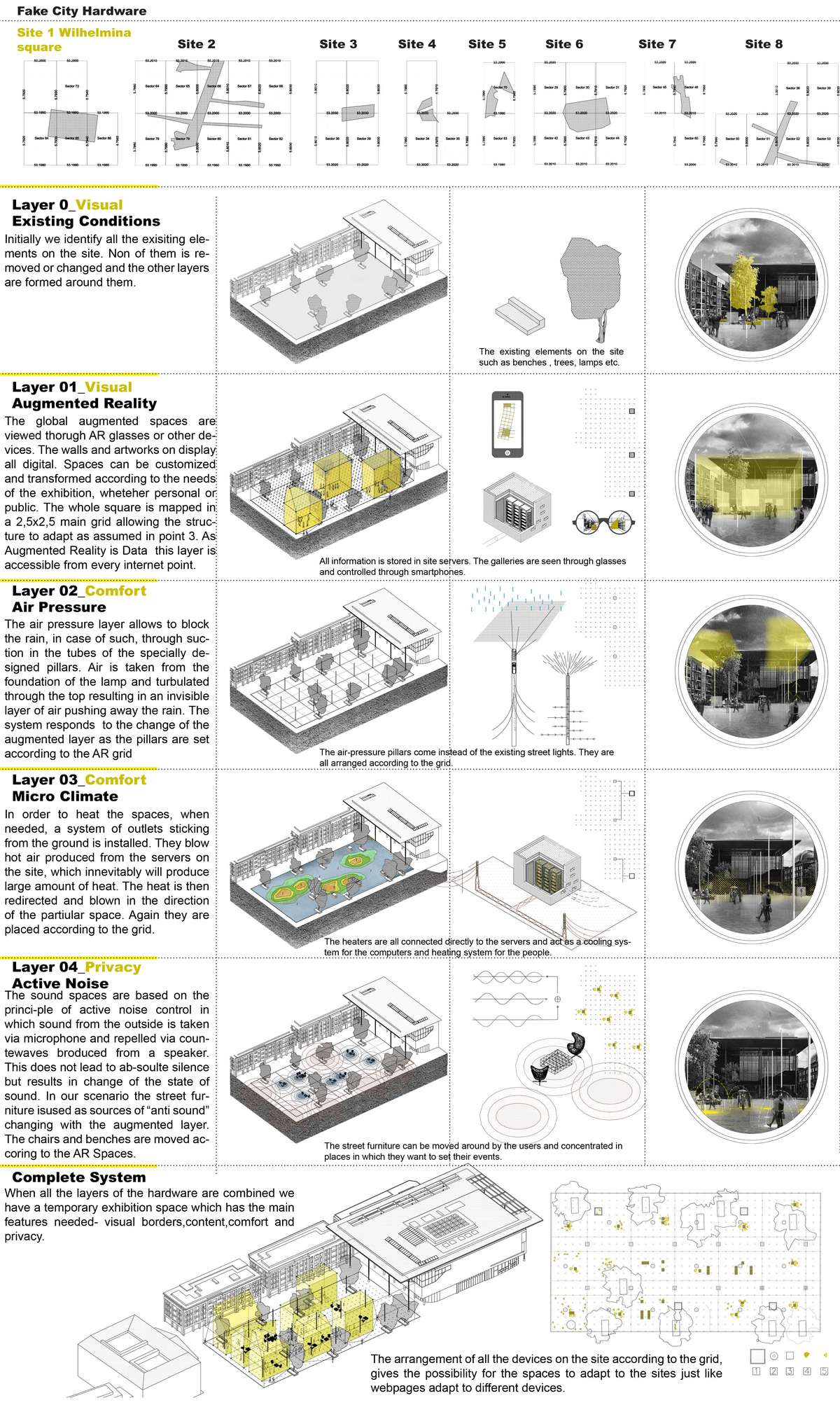
The exhibition spaces of the "Fake City" are formed by 4 dynamic immaterial fields,produced by devices installed on each site. The first layer provides the visual basis. The walls and exhibitions are all displayed with the use of Augmented Reality. The second layer, provides shelter from rain by turbulating air under pressure. The third layer gives comfort by creating a microclimatic field on the site. The fourth layer gives privacy by decreasing the external noise by using active noise control.
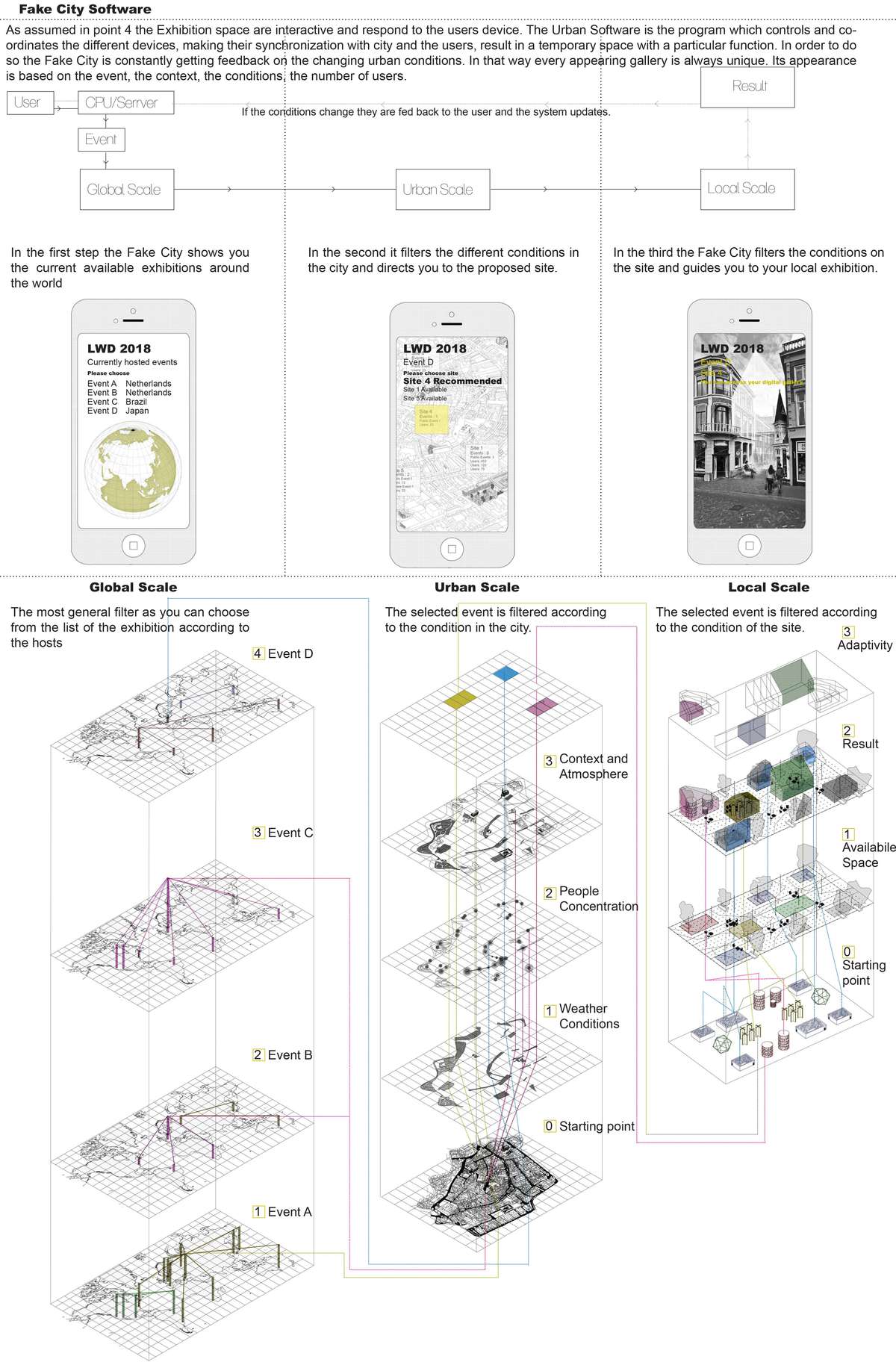
The Urban Software is the program which controls and coordinates the different devices, making their synchronization with city and the users, result in a temporary space with a particular function. In order to do so the Fake City is constantly getting feedback on the changing conditions. The software filters information on Global, Urban and Local scale. It allows the user to interact with the exhibition space making it as responsive as a computer program.
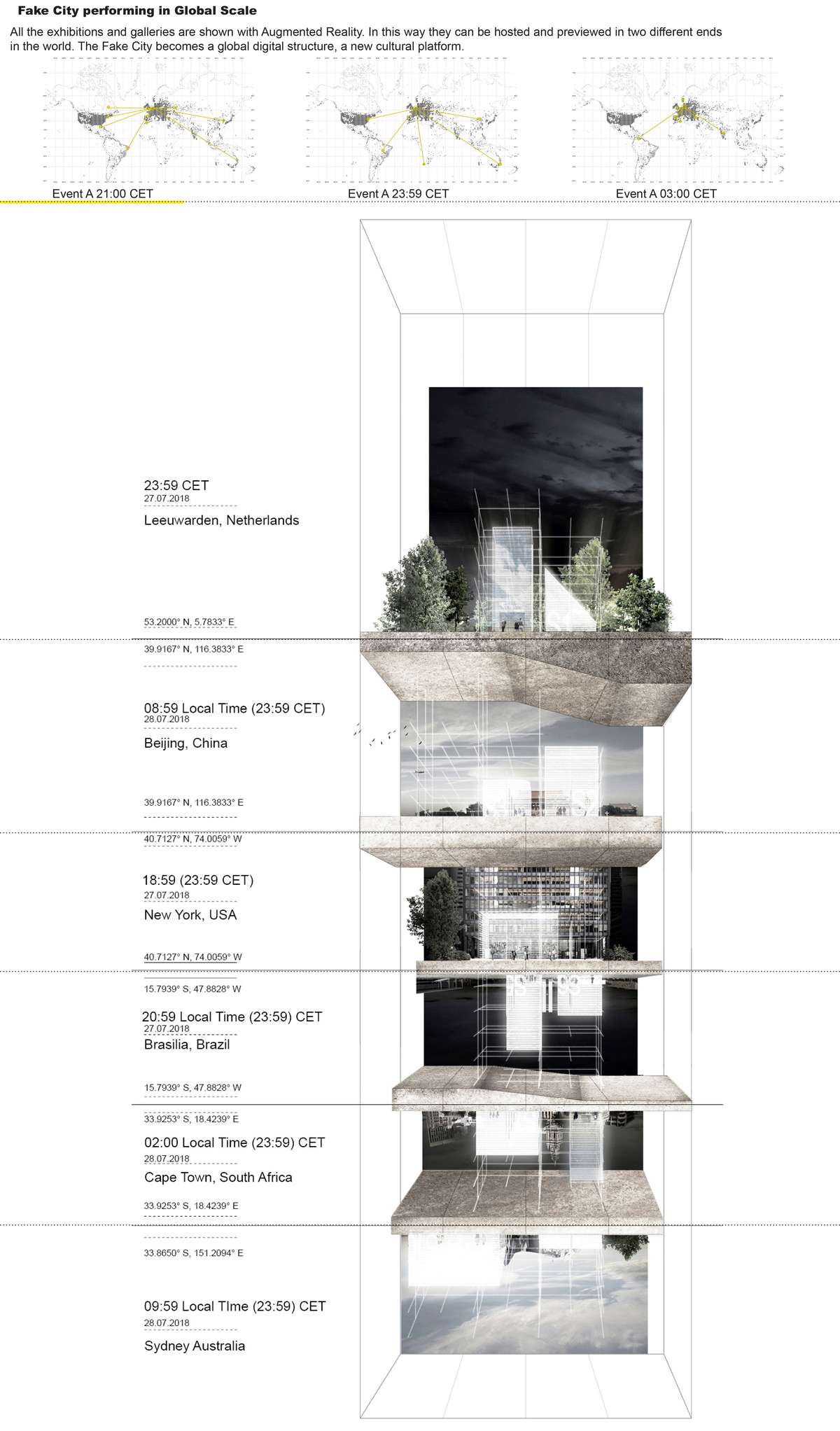
When the Fake City is active, Leeuwarden shares the events which are happening in the city with the rest of the points on the global masterplan. The Global Galleries allow local artists to demonstrate their exhibitions in live worldwide events.
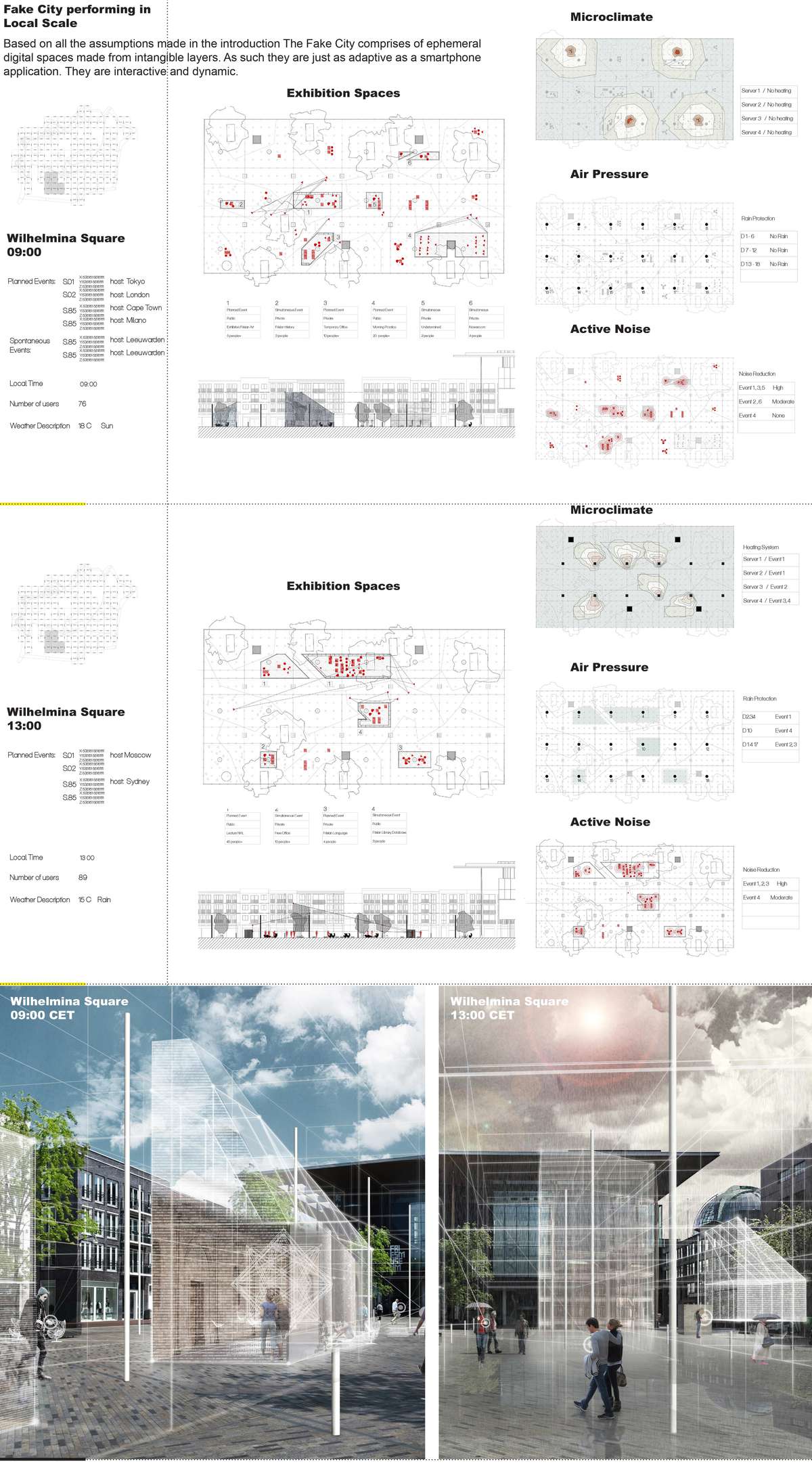
As the demands and the conditions for the "Fake City" change during the day, the temporary virtual spaces constantly transform and adapt. The functions needed by the users during the daytime vary with time. Mornings could lead to more separated and private spaces, afternoons to more organized events and evenings to big events with large gathering of users. In all the cases "The Fake City" remains an architectural form of spatial communication between the urban context and the people.
The Fake City
The Fake City

The ongoing Information Revolution leads to conditions in which cultural institutions lose their positions in our contemporary society. Today’s museums, galleries, libraries are, as such, obsolete. Cultural festivals, expos and are all temporary events related with extreme expenses and high resource waste over an unreasonable period of time. New dynamics, the exposure by the web of all new works of arts in an almost real time challenges the notion of cultural spaces as a stationary boxes where artistic productions are displayed.
“The Fake City” proposes a different typology of architectural space, which inspired from the swift technological development of our days shifts the attention from material to immaterial space . Designed to be located at the historical heart of the city of Leeuwarden which is set to represent the Netherlands as a European Capitol of Culture in 2018, it investigates the possibility of becoming a Global Capitol of Culture for 2018.

Every point with internet access in the world is an input and output of information.The central cultural point for 2018 in this global master plan is Leeuwarden. The first fundamental point of the project is its division in two segments- “hardware” as devices inserted in the urban context and “software” as the which organizes the variety of devices. The basis of the hardware are selected public spaces next to famous landmarks in the cultural center of Leeuwarden.

The exhibition spaces of the "Fake City" are formed by 4 dynamic immaterial fields,produced by devices installed on each site. The first layer provides the visual basis. The walls and exhibitions are all displayed with the use of Augmented Reality. The second layer, provides shelter from rain by turbulating air under pressure. The third layer gives comfort by creating a microclimatic field on the site. The fourth layer gives privacy by decreasing the external noise by using active noise control.
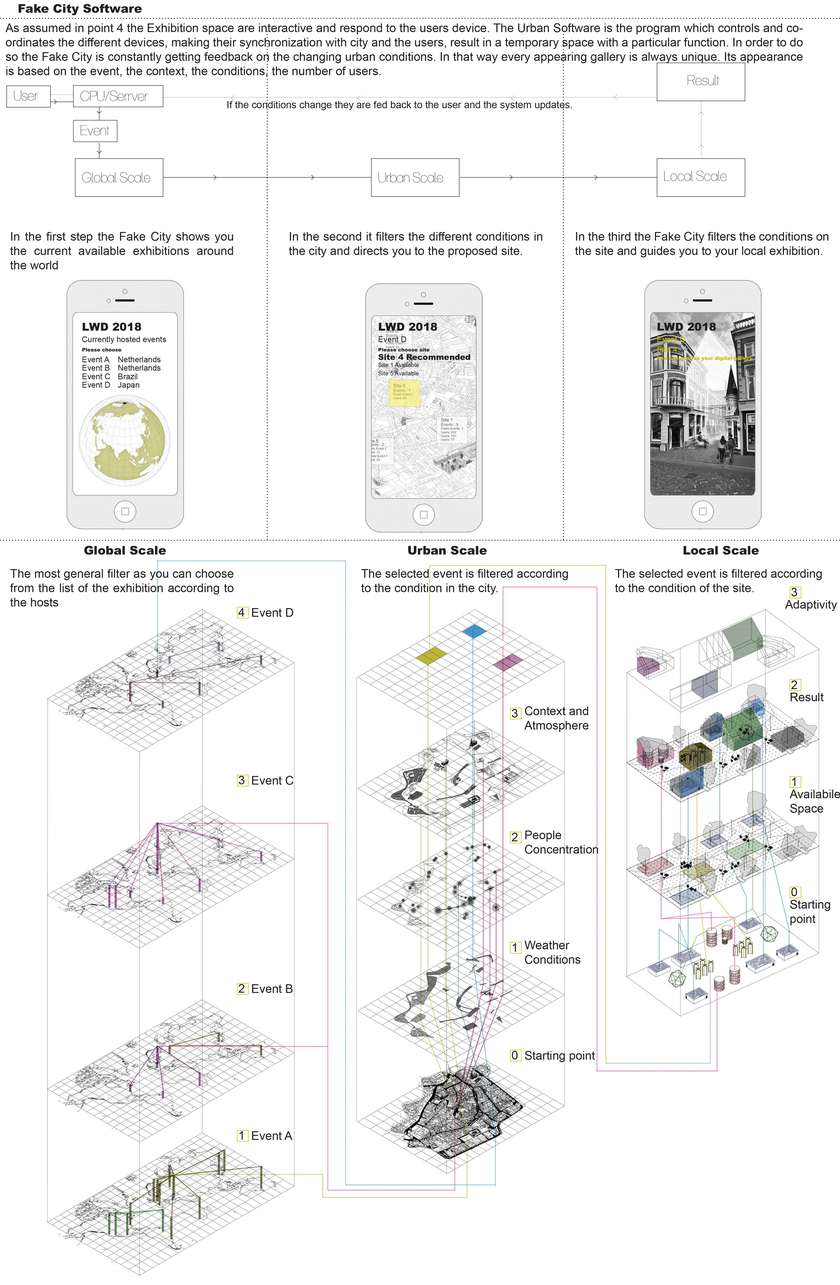
The Urban Software is the program which controls and coordinates the different devices, making their synchronization with city and the users, result in a temporary space with a particular function. In order to do so the Fake City is constantly getting feedback on the changing conditions. The software filters information on Global, Urban and Local scale. It allows the user to interact with the exhibition space making it as responsive as a computer program.
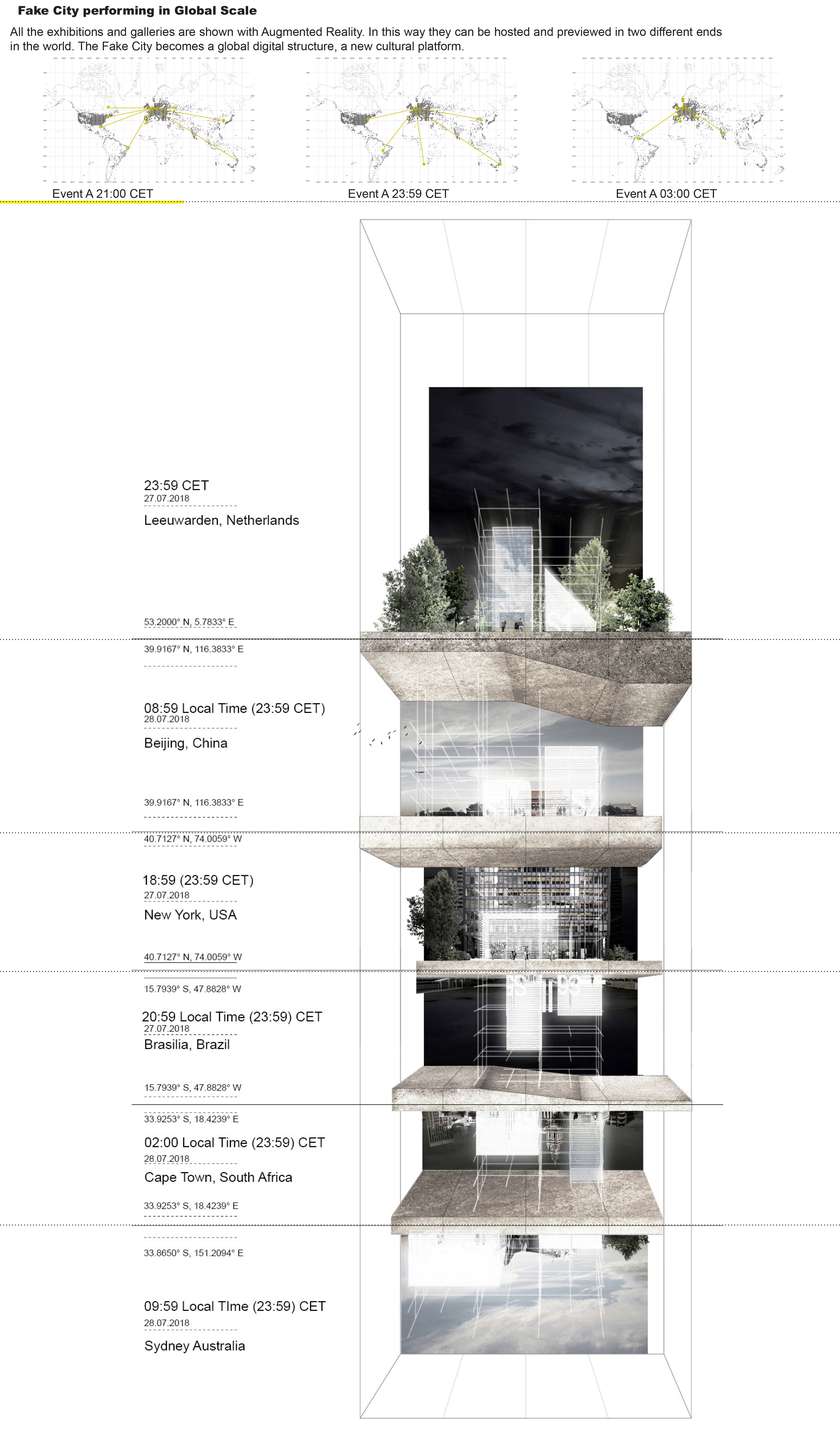
When the Fake City is active, Leeuwarden shares the events which are happening in the city with the rest of the points on the global masterplan. The Global Galleries allow local artists to demonstrate their exhibitions in live worldwide events.
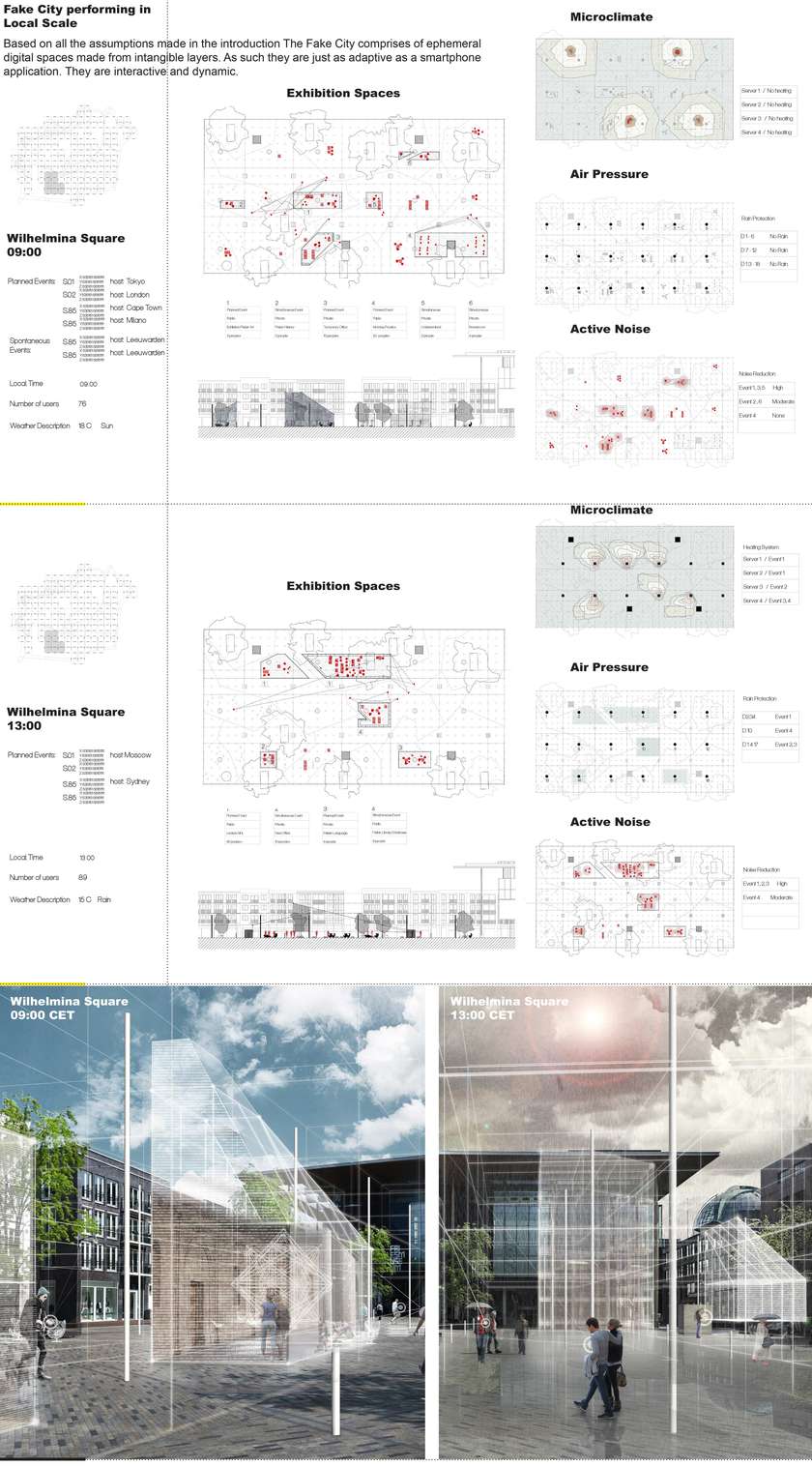
As the demands and the conditions for the "Fake City" change during the day, the temporary virtual spaces constantly transform and adapt. The functions needed by the users during the daytime vary with time. Mornings could lead to more separated and private spaces, afternoons to more organized events and evenings to big events with large gathering of users. In all the cases "The Fake City" remains an architectural form of spatial communication between the urban context and the people.